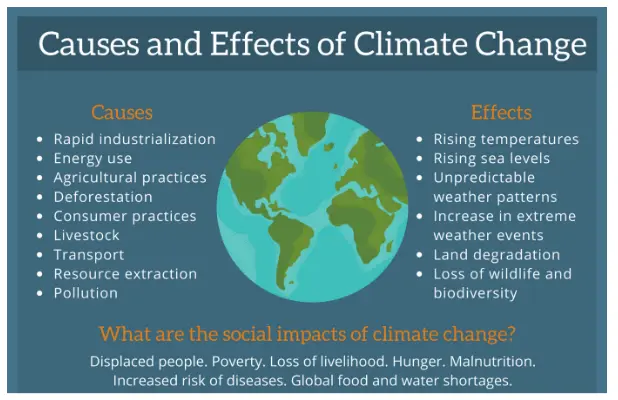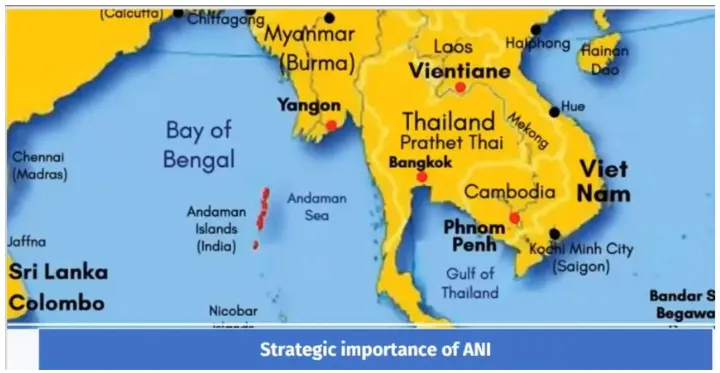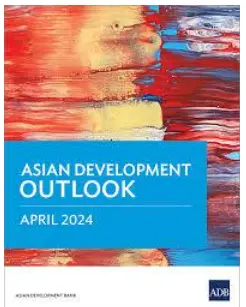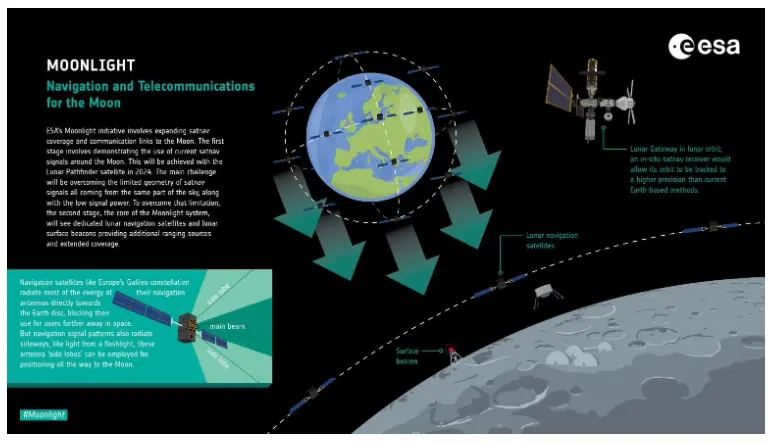Saturday, 20th April 2024
Cotton Cultivation in North India
In News: Stakeholders anticipate a possible decrease in cotton acreages as the 2024-25 kharif cotton planting season approaches in North India.
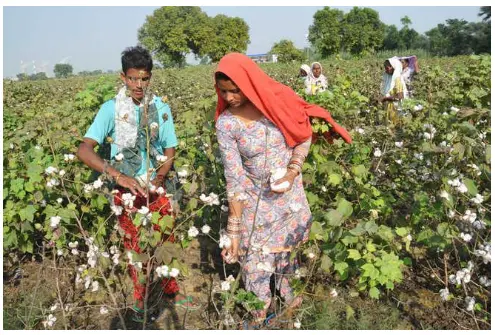
Understanding Pink Bollworm (PBW) Infestation in Cotton Crops
About PBW Infestation:
- PBW, scientifically known as Pectinophora gossypiella, is a significant pest affecting cotton crops, primarily targeting developing cotton fruits such as flower buds (squares) and seed-containing bolls.
- The pest lays eggs on buds, flowers, and bolls, and the hatched larvae feed on seeds within the bolls, causing damage to lint and quality deterioration.
Historical Context of PBW Resistance:
- The introduction of Bt Cotton, genetically modified to resist pests like PBW, aimed to address the issue. However, PBW has developed resistance to Bt Cotton over time, worsening the problem.
- Several factors contributed to the development of PBW resistance, including continuous cotton planting without crop rotation, illegal cultivation of unapproved Bt/HT seeds, extended cultivation of long-duration hybrids, and lack of adherence to refugia planting.
Impact on Crop Yield and Economy:
- PBW infestation leads to significant yield losses and affects cotton fibre quality, impacting farmers' income and sustainability.
- Reports indicate substantial damage in cotton farms across Haryana, Punjab, and Rajasthan, with severe economic repercussions for farmers and the regional economy.
Trends in Cotton Cultivation in North India:
- North Indian states like Punjab, Rajasthan, and Haryana are experiencing fluctuations in cotton acreages.
- Punjab witnessed a significant decline in cotton area during the 2023-24 kharif season, while Rajasthan saw a slight decrease and Haryana observed a marginal increase.
- Farmers are exploring alternative crop options such as paddy, maize, guar, mung beans, and groundnuts due to quality concerns and poor realisations.
Shift Towards Alternative Crops:
- The preference for alternative crops varies across regions, with factors like water availability influencing crop choices.
- Labour costs are rising, further challenging cotton farmers in North India, while poor quality resulting from pest infestations impacts farmers' realisations.
Expectations for the Coming Season (2024):
- Despite challenges, there is cautious optimism for the forthcoming cotton season due to favourable monsoon forecasts and relatively better prices.
- However, concerns persist regarding the lack of advanced technology and the severity of PBW damages observed in certain areas.
|
UPSC Previous Year Questions Prelims (2021) Q. The black cotton soil of India has been formed due to the weathering of (a) brown forest soil (b) fissure volcanic rock (c) granite and schist (d) shale and limestone Ans: (b) Prelims (2011) Q2. A state in India has the following characteristics:
Which one of the following states has all of the above characteristics? (a) Andhra Pradesh (b) Gujarat (c) Karnataka (d) Tamil Nadu Ans: (b) Mains (2012) Q. Analyse the factors for the highly decentralised cotton textile industry in India. |
Source: TH
India’s Post Office in Antarctica
In News: Recently, after nearly four decades, the Department of Posts inaugurated a second branch of the post office at the Bharati research station in Antarctica.
Significance of India’s Post Office in Antarctica
- Historical Context:
- In 1984, India established its inaugural post office in Antarctica at Dakshin Gangotri, its first research station on the continent.
- Unfortunately, Dakshin Gangotri submerged in ice in 1988-89, leading to its decommissioning.
- Continuing the Tradition:
- India inaugurated another post office at the Maitri research station on January 26, 1990.
- Despite being 3,000 km apart, both Maitri and Bharati research bases fall under the Goa postal division.
- Operational Process:
- Letters designated for the Antarctic post office are routed to the National Centre for Polar and Ocean Research (NCPOR) in Goa.
- A researcher accompanying a scientific expedition to Antarctica carries the letters, which are then 'cancelled' at the research base before being returned via post.
- Strategic Presence:
- The presence of an Indian post office in Antarctica serves strategic purposes, symbolizing India's commitment to scientific exploration and environmental stewardship.
- It asserts India's presence on the continent, which otherwise falls under neutral territory as per the Antarctic Treaty.
- Antarctica’s Governance:
- The Antarctic Treaty, governing the continent, emphasizes peaceful purposes and scientific discovery.
- The existence of an Indian post office aligns with the treaty's spirit, promoting international cooperation in Antarctic affairs.
India’s Antarctic Programme
- About:
- India's Antarctic Programme, managed by the National Centre for Antarctic and Ocean Research (NCPOR), commenced in 1981 with the first Indian expedition to Antarctica.
- NCPOR, established in 1998, oversees India's scientific research and exploration efforts in Antarctica.
- Dakshin Gangotri:
- Dakshin Gangotri was India's initial scientific research base in Antarctica, established as part of the Indian Antarctic Program.
- However, it submerged in ice in 1988-89 and was decommissioned.
- Maitri:
- Maitri, India's second permanent research station in Antarctica, was completed in 1989. Situated in the Schirmacher Oasis, Maitri is complemented by Lake Priyadarshini, a freshwater lake constructed nearby.
- Bharati:
- Bharati, operational since 2012, serves as India's latest research station in Antarctica.
- Located approximately 3000 km east of Maitri, Bharati enhances research capabilities despite Antarctica's harsh climate.
- Other Research Facilities:
- Sagar Nidhi, commissioned in 2008 by the National Institute of Ocean Technology (NIOT), is an ice-class vessel facilitating oceanographic research in Antarctic waters.
- It has been instrumental in various marine research endeavors.
Antarctic Treaty System
- About:
- The Antarctic Treaty System comprises agreements aimed at regulating relations among states in Antarctica, ensuring peaceful purposes and environmental protection.
- The treaties, including the 1959 Antarctic Treaty and subsequent conventions and protocols, form a robust international governance framework for the region.
- Challenges:
- While the Antarctic Treaty System has successfully managed various challenges, the contemporary context presents new complexities. Increased accessibility and growing global interests necessitate renewed attention to the treaty's future.
- International Agreements:
- Key agreements include the 1959 Antarctic Treaty, the 1972 Convention for the Conservation of Antarctic Seals, the 1980 Convention on the Conservation of Antarctic Marine Living Resources, and the 1991 Protocol on Environmental Protection to the Antarctic Treaty.
|
UPSC Previous Year Questions Prelims (2019) Q. On 21st June, the Sun (a) does not set below the horizon at the Arctic Circle Ans: (a) Mains (2021) Q. How do the melting of the Arctic ice and glaciers of the Antarctic differently affect the weather patterns and human activities on the Earth? Explain. Mains (2018) Q. Why is India taking keen interest in resources of Arctic region? |
Source: IE
Factors Contributing to the Decline in Private Investments
In News: Private investment has been on a consistent downward trend since 2011-12, with the government anticipating increased investment from major Indian corporations.
Understanding Private Investment Trends in India
Introduction:
- Private investment in India has shown sluggish growth since 2011-12, with a decline noted in this kind of investment.
- Despite government efforts such as reducing corporate taxes in 2019, private investment hasn't significantly increased.
What is GFCF and Its Importance?
- GFCF, or Gross Fixed Capital Formation, represents the growth in fixed capital within an economy, including investments in buildings and machinery.
- It serves as an indicator of private sector willingness to invest and impacts economic growth and living standards.
- GFCF matters as it determines the overall output of an economy and influences consumer purchasing power.
- Developed economies typically have higher GFCF per capita compared to developing economies like India.
Current Trend in Private Investment:
- Private investment in India began growing more prominently after economic reforms in the late 1980s and early 1990s.
- Government spending, or public investment, was higher than private investment until the 1980s when private investment gained importance.
- However, private investment declined after the global financial crisis in 2007-08 and further dropped after 2011-12, reaching a low of 19.6% of the economy in 2020-21.
Reasons for Decline in Private Investments:
- Some economists attribute the decline in private investment to low consumer spending, especially during the pandemic, as businesses invest more when future sales are promising.
- However, historical data suggests that increased consumer spending doesn't always lead to more business investments.
- Deeper issues like government policies and uncertainty are also considered significant factors affecting business investment decisions.
- Economic reforms in 1991 led to an increase in business investments, but a slowdown in reforms over the last two decades corresponded with a decline in investments.
Conclusion:
- Low private investment can hinder economic growth as businesses refrain from spending on essential assets like factories and machinery.
- There's debate over the role of government spending: while some believe it can compensate for low private investment, others argue that it may discourage private investment and slow down the economy.
- Overall, private businesses are often considered better at allocating investments, and excessive taxes can impede economic activity by reducing funds available for both businesses and consumers.
Source: TH
CDP-SURAKSHA
In News: The Central government has recently introduced a novel platform named CDP-SURAKSHA to distribute subsidies to horticulture farmers as part of the Cluster Development Programme (CDP).

Overview of CDP-SURAKSHA and the Horticulture Sector in India
About CDP-SURAKSHA:
- SURAKSHA, which stands for "System for Unified Resource Allocation, Knowledge, and Secure Horticulture Assistance," facilitates instant subsidy disbursal to farmers through e-RUPI vouchers from the NPCI.
- It integrates various features such as database integration, cloud-based server space, UIDAI validation, eRUPI integration, local government directory, content management system, geotagging, and geo-fencing.
- The platform enables farmers to place orders, contribute financially, generate e-RUPI vouchers, receive planting material from vendors, verify deliveries through geo-tagged media, and ensure subsidy release to vendors.
Status of the Horticulture Sector in India:
- India ranks as the second-largest producer of fruits and vegetables globally, with these crops contributing to nearly 90% of the horticulture production.
- The sector contributes approximately 33% to the agriculture Gross Value Added (GVA) and has surpassed food grain production in terms of quantity, despite utilizing smaller land areas.
- Horticulture crops exhibit significantly higher productivity compared to food grains, with India leading in the production of certain vegetables and fruits.
- However, India's share in the global horticultural market remains modest, and challenges such as post-harvest wastage and infrastructural deficiencies persist.
Overview of the Cluster Development Program (CDP):
- CDP is a central sector program aimed at enhancing the global competitiveness of identified horticulture clusters.
- These clusters, characterized by regional concentration of specific horticulture crops, are developed through Cluster Development Agencies (CDAs) under the National Horticulture Board (NHB).
- Objectives include addressing pre-production, production, post-harvest management, logistics, marketing, and branding issues, with a focus on boosting exports and creating cluster-specific brands.
Challenges Faced by the Horticulture Sector:
- Production challenges stem from factors like small landholdings, inadequate irrigation, and climate change-related risks.
- Institutional challenges include limited access to insurance, mechanization, and credit for small farmers.
- Climate change events, weak Farmers Producer Organisations (FPOs), infrastructural deficiencies, and guidance on crop selection also pose challenges.
Initiatives for Horticulture Sector Development:
- Initiatives such as the National Horticulture Board (NHB), Cluster Development Programme, CHAMAN project, Mission for Integrated Development of Horticulture (MIDH), and Pradhan Mantri Krishi Sinchayee Yojana (PMKSY) aim to promote holistic growth and address sectoral challenges.
- Efficient subsidy disbursal, coupled with efforts to enhance productivity, are crucial for the sector's sustainable growth and meeting future demand.
Way Forward:
Timely subsidy disbursal and productivity enhancement are vital for the sector's growth and to meet the rising demand for fruits and vegetables in India.
|
UPSC Previous Year Questions Prelims (2020) Q. Under the Kisan Credit Card scheme, short-term credit support is given to farmers for which of the following purposes?
Select the correct answer using the code given below: (a) 1, 2 and 5 only Ans: (b) Mains (2018) Q. Assess the role of the National Horticulture Mission (NHM) in boosting the production, productivity and income of horticulture farms. How far has it succeeded in increasing the income of farmers? |
Source: IE
Clouded Tiger Cat
In News: The newly identified species of tiger cat, the clouded tiger cat, found in Brazil, is under threat due to deforestation and illegal hunting.
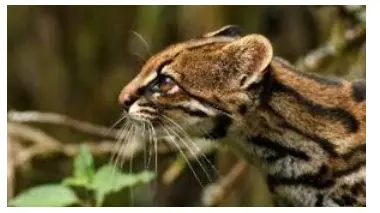
Introduction to Tiger Cats
- Tiger cats, also known as oncillas, are small spotted cats native to Central and South America, known for their adeptness in tree-climbing and hunting small prey.
- They rank among the smallest and most reserved wild cats in the Americas, typically weighing between 1.5 to 3 kilograms (3.3 to 6.6 pounds), considerably smaller than the average domestic house cat.
- Previous Taxonomy:
- Until recently, tiger cats were classified into two species: the northern tiger cat (Leopardus tigrinus) and the Atlantic Forest tiger cat (Leopardus guttulus), with a few subspecies recognized within these categories.
- Distribution:
- The northern tiger cat inhabits the savannas and shrublands of the Guiana Shield and central Brazil, whereas the Atlantic Forest tiger cat resides in forested regions stretching from central to southern Brazil, extending through Paraguay and northeastern Argentina.
Discovery of Clouded Tiger Cat
Characteristics:
- The clouded tiger cat (Leopardus pardinoides) is a newly identified species of forest-dwelling tiger cat, characterized by its long tail and short, rounded ears, with an average weight of 2.27 kg.
- Geographic Distribution:
- This species is found in the cloud forests spanning the southern Central American and Andean Mountain chains, ranging from Costa Rica through Panama, Colombia, Peru, Bolivia, to Argentina.
- Physical Features:
- The clouded tiger cat exhibits a head resembling that of a margay, adorned with dense soft fur of various reddish, orangish, and grayish-yellow hues, embellished with irregularly shaped medium-large 'cloudy' rosettes that are prominently marked and often merge together.
- Unique Trait:
- Remarkably, this species possesses only one pair of mammae or teats, distinguishing it from other tiger cat species.
Source: TOI
Mount Ruang
In News: Recently, Mount Ruang commenced its eruption, ejecting an ash cloud soaring upwards of a mile into the sky.
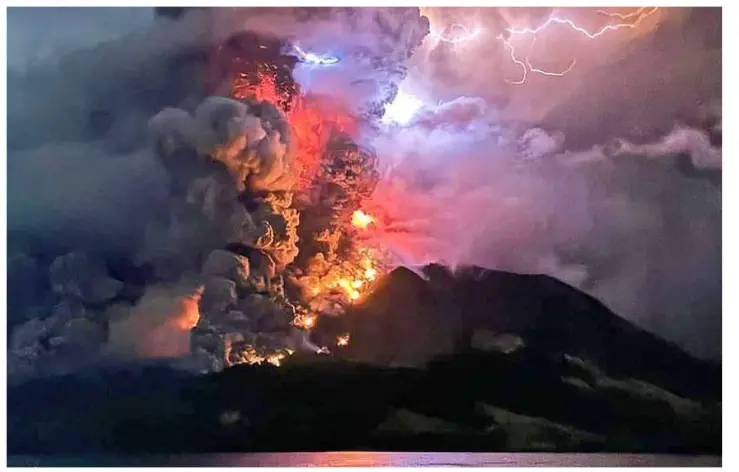
Exploring Mount Ruang: Indonesia's Stratovolcano
- Location and Characteristics:
- Mount Ruang is situated in Indonesia's North Sulawesi province, standing at a height of 725 meters (2,400 feet).
- Its summit rises 10,932 feet above sea level, featuring a caldera approximately two miles wide.
- What is a Stratovolcano?
- A stratovolcano is a tall, steep, cone-shaped type of volcano known for its higher peaks compared to flat shield volcanoes.
- Typically found above subduction zones, they are often part of large volcanically active regions like the Ring of Fire around much of the Pacific Ocean.
- Composition and Characteristics:
- Stratovolcanoes make up the majority (~60%) of the Earth's individual volcanoes.
- Eruptions from stratovolcanoes predominantly involve cooler and more viscous lavas such as andesite and dacite.
- The higher viscosity of these lavas allows for the accumulation of gas pressure, often leading to explosive eruptions.
- They consist of roughly equal parts of lava and pyroclastic material, giving rise to their alternative name, composite volcanoes.
- Typically, stratovolcanoes feature a small crater at the peak, which may contain water, ice, or a volcanic dome during periods of relative inactivity.
Source: TOI
Gross Fixed Capital Formation
In News: One of the significant challenges confronting the Indian economy has been the sluggish growth of private investment, evident in the stagnation of private Gross Fixed Capital Formation (GFCF) as a percentage of GDP at current prices.
Understanding Gross Fixed Capital Formation (GFCF)
- Definition and Components:
- Gross Fixed Capital Formation (GFCF) denotes the expansion in the size of fixed capital within an economy.
- Fixed assets or capital encompass tangible or intangible assets produced as outputs from production processes and utilized repeatedly for over a year.
- GFCF encompasses investments by resident producers in fixed assets during a specified period, subtracting disposals.
- It also includes certain augmentations to the value of non-produced assets realized by producers or institutional units.
- Significance:
- Private GFCF can provide a rough indication of the private sector's willingness to invest within an economy.
- Overall GFCF comprises capital formation resulting from both private and government investments.
- Fixed capital is crucial as it aids workers in enhancing the production of goods and services annually, thereby fostering economic growth and elevating living standards.
- Developed economies like the U.S. exhibit higher fixed capital per capita compared to developing economies such as India.
- Importance of Statistics:
- GFCF within the Indian economy witnessed a notable increase from INR 32.78 lakh crore in 2014-15 to INR 54.35 lakh crore in 2022-2023.
- This upsurge in capital formation mirrors substantial investments in infrastructure, industry, and public goods.
Source: TH
Global Alliance for Incinerator Alternatives
In News: The Asia Pacific branch of the Global Alliance for Incinerator Alternatives (GAIA), along with several other environmental organizations, has urged the ASEAN to take immediate and resolute measures to address plastic pollution.
About Global Alliance for Incinerator Alternatives (GAIA)
- GAIA is a global coalition comprising more than 1,000 grassroots groups, non-governmental organizations, and individuals across over 90 countries.
- Its mission is to facilitate a transition from the current linear and extractive economic model to a circular system that upholds people's right to a safe and healthy environment.
- GAIA envisions a just, zero-waste world founded on principles of ecological sustainability and community rights, where toxic pollution is eradicated, and resources are sustainably managed rather than incinerated or dumped.
- The alliance pursues its objectives through various strategies, including local campaigns, advocacy for policy and financial shifts, research initiatives, communication efforts, and fostering a global movement.
- GAIA focuses on four main areas of intervention: incineration, zero waste, plastic pollution, and climate change.
About Incineration
- Incineration is a process involving the burning of hazardous materials at high temperatures to eliminate contaminants.
- It typically occurs in specialized furnaces known as incinerators, designed to handle hazardous waste within a combustion chamber.
- Various forms of hazardous materials, including soil, sludge, liquids, and gases, can undergo treatment through incineration.
- While incineration effectively destroys many harmful chemicals like solvents and pesticides, it does not eliminate metals such as lead and chromium.
- Modern incinerators incorporate air pollution control devices like fabric filters, scrubbers, and electrostatic precipitators to remove fly ash and gaseous pollutants.
Source: DTE
GPS Spoofing
In News: According to reports, Israel allegedly employed GPS spoofing tactics to disrupt the missile targeting teams of Iran by interfering with Global Positioning System (GPS) navigation signals.
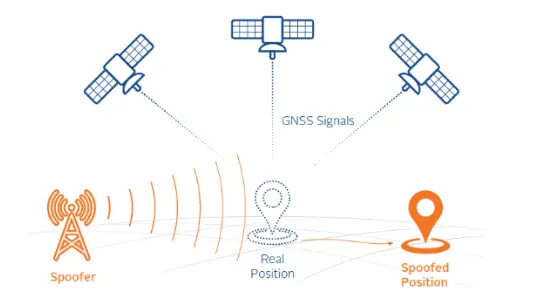
Understanding GPS Spoofing
- GPS spoofing, also referred to as GPS simulation, involves manipulating or deceiving a GPS receiver by transmitting false GPS signals.
- The primary objective of GPS spoofing is to deceive the GPS receiver into believing it is situated in a location different from its actual position, leading to the provision of inaccurate location data.
- This cyberattack undermines the reliability of GPS data, which is crucial for a wide range of applications across various industries.
- Over the years, GPS spoofing has evolved significantly from being a theoretical threat to a practical concern due to the accessibility of low-cost software and hardware capable of generating fake GPS signals.
- It's important to note that spoofing differs from jamming; while jamming disrupts GPS signals, spoofing manipulates the signals to provide false location information.
- While incidents of jamming are common, instances of GPS spoofing, especially of the nature observed in recent cases, are rare.
Mechanism of Operation
- GPS spoofing exploits vulnerabilities inherent in the GPS infrastructure, primarily the weak signal strength of GPS satellites.
- The GPS system operates by transmitting signals from satellites to GPS receivers on Earth, which calculate their position based on the time taken for these signals to reach them.
- However, the weak signal strength of GPS satellites makes them susceptible to being overwhelmed by counterfeit signals, resulting in inaccuracies in the location data received by the GPS receiver.
Implications
- GPS spoofing can have potentially catastrophic consequences, particularly in scenarios where accurate navigation is critical.
- The widespread adoption of GPS technology across various industries such as logistics, telecommunications, energy, and defense makes them vulnerable to the impacts of GPS spoofing.
- Industries reliant on GPS for navigation, timing, and coordination of operations may experience disruptions and financial losses due to inaccurate location data caused by spoofing attacks.
Source: BS
India’s nuanced approach in the South China Sea
In News: New Delhi's approach to the South China Sea (SCS) is undergoing a shift. This strategic adjustment acknowledges the critical significance of the South China Sea to regional security and the global maritime order.
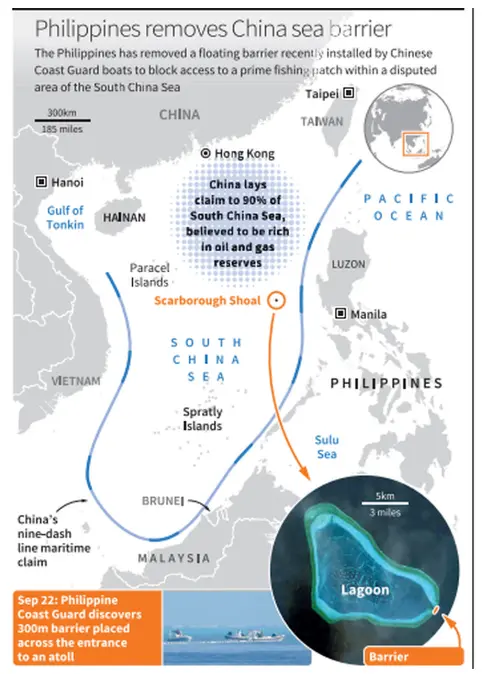
India's Evolving Approach to the South China Sea Disputes
Historical Context:
- During a visit to the Philippines in March 2024, the Indian External Affairs Minister affirmed India's full support for the nation's sovereignty amidst escalating tensions between Manila and Beijing in 2023.
- A joint statement between New Delhi and Manila in 2023 underscored the importance of China adhering to maritime regulations and recognizing the 2016 ruling by the International Court of Justice (ICJ) in favor of Manila.
India's Shifting Approach:
- India's stance on the South China Sea (SCS) has evolved from a cautious and neutral stance to a more proactive and strategic approach, reflecting its broader strategic and economic goals on the global stage.
- Initially driven by economic motives under the Look East Policy, India's engagement in the region transitioned to the Act East Policy, emphasizing strategic partnerships, enhanced security cooperation, and economic integration with Indo-Pacific nations.
India's Relationship with China:
- China's assertiveness in the SCS and Indian Ocean has prompted India to adopt a more proactive stance in response to perceived threats to its maritime security.
- The complex relationship between India and China, marked by border disputes and periodic incursions, further influences India's position on the SCS.
- India's Strategic Engagements:
- India has bolstered its capabilities through measures such as forward positioning, mission-based deployments, heightened maritime domain awareness, and the development of deep-water maritime facilities.
Strategic Engagements with ASEAN:
- India's strategic adjustment acknowledges the significance of the SCS for regional security and the global maritime order, emphasizing ASEAN centrality and advocating for a rule-based international maritime order.
Challenges and Options:
- India faces challenges in navigating the complexities of the SCS disputes while exploring various options, including capacity-building initiatives, defence cooperation, infrastructure development, and advocacy for upholding international law.
Conclusion:
- India's nuanced approach to the SCS disputes reflects its broader strategy to protect its interests while contributing to collective efforts aimed at preserving peace, stability, and adherence to international law in the Indo-Pacific region.
Source: TH
Share the article
Edukemy’s Current Affairs Quiz is published with multiple choice questions for UPSC exams
MCQ
Get Latest Updates on Offers, Event dates, and free Mentorship sessions.

Get in touch with our Expert Academic Counsellors 👋
Frequently Asked Questions
UPSC Daily Current Affairs focuses on learning current events on a daily basis. An aspirant needs to study regular and updated information about current events, news, and relevant topics that are important for UPSC aspirants. It covers national and international affairs, government policies, socio-economic issues, science and technology advancements, and more.
UPSC Daily Current Affairs provides aspirants with a concise and comprehensive overview of the latest happenings and developments across various fields. It helps aspirants stay updated with current affairs and provides them with valuable insights and analysis, which are essential for answering questions in the UPSC examinations. It enhances their knowledge, analytical skills, and ability to connect current affairs with the UPSC syllabus.
UPSC Daily Current Affairs covers a wide range of topics, including politics, economics, science and technology, environment, social issues, governance, international relations, and more. It offers news summaries, in-depth analyses, editorials, opinion pieces, and relevant study materials. It also provides practice questions and quizzes to help aspirants test their understanding of current affairs.
Edukemy's UPSC Daily Current Affairs can be accessed through:
- UPSC Daily Current Affairs can be accessed through Current Affairs tab at the top of the Main Page of Edukemy.
- Edukemy Mobile app: The Daily Current Affairs can also be access through Edukemy Mobile App.
- Social media: Follow Edukemy’s official social media accounts or pages that provide UPSC Daily Current Affairs updates, including Facebook, Twitter, or Telegram channels.

